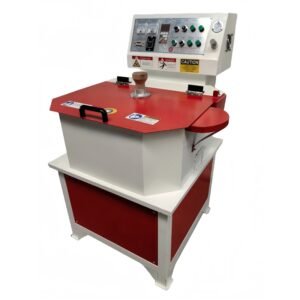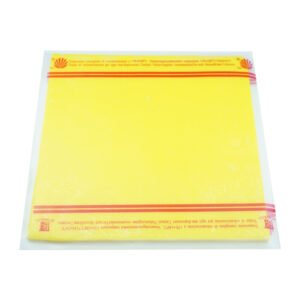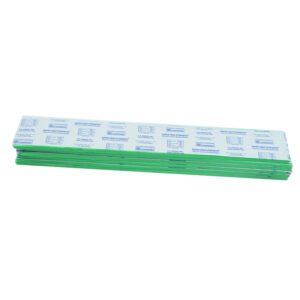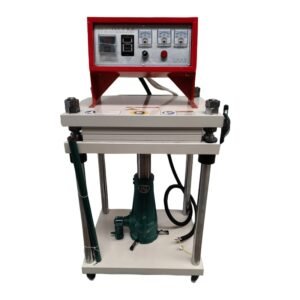General description
[edit]
The two defining characteristics of spin casting are semi-permanent (non-expendable) rubber molds, and the use of inertial force. These make the process relatively unique compared to machined die-based and expendable mold casting methods. These qualities enable operators to design original models using media such as polymer clay, which has an easy to carve, Plasticine-like consistency and when heated using a conventional oven hardens enough to hold up under the vulcanization process, producing an original mold where models are then cast for the production mold.[clarification needed] These qualities also encourage operators to use casting materials specially formulated for low melting points and viscosities. Most spin casting is done with pewter and zinc alloys or thermoset plastics.
Silicone molds
[edit]
The spin casting process typically uses vulcanized silicone or organic rubber as the mold-making substrate. Vulcanization is an integral step that occurs halfway through the mold-making process. Prior to vulcanization, the mold rubber is a soft and malleable solid-like fluid, in many ways very similar to Silly Putty. Because of the clay-like nature at this stage, the mold is easily cut or shaped to accommodate irregular models. Vulcanization serves two purposes: establishing the negative space inside the mold as well as hardening the rubber so it will remain strong and rigid during casting.
After vulcanization, before it is usable, the mold must undergo gating and venting. This involves carving channels to ensure proper air and material flow during the casting process. Gating and venting is typically done by hand using a sharp knife or scalpel and varies in time depending upon the complexity of the mold. The final product is a cured rubber mold, which can withstand anywhere from hundreds to over a thousand casting cycles before replacement is needed.
Casting materials
[edit]
Metal
[edit]
Generally, the casting materials used for competing processes like metal die casting and injection molding are similar, but not suitable for spin casting. For example, a typical zinc die-casting alloy such as Zamak 3 can be used but will solidify too rapidly from a molten state when cast with centrifugal force. This typically results in incomplete filling of the mold as well as a rough, porous finish, called orange peel. Zamak 2, of a slightly different composition, was originally developed as a gravity-cast alloy with greater finished strength but was found to work well with spin-casting. Its extra copper content encourages the eutectic behaviour and gives a lower freezing point. It has become known as ‘Kirksite’ and has given rise to a range of dedicated spin-casting alloys, some with additional components, such as magnesium, to control the surface finish.
To ensure replicable casting cycles of accurate reproductions with a high quality finish, the spin casting process requires casting materials with the following qualities, for the following reasons:
- Low temperature operation – Spin casting is a low temperature process, as overexposure to high temperatures causes the rubber mold to degrade. Depending on the actual compound, the mold may become overly soft or hard while forming cracks and chips.
- Slow solidification and low viscosity – Uniform and unrestricted flow of the casting material has a substantial effect on the quality and finish of the final items.
Plastic
[edit]
Aside from the aforementioned metal alloys, thermoset resins and plastics work well with spin casting as they can be introduced as liquids and will set or solidify while the mold spins. In general, spin casting encourages the use of casting materials that are liquid upon introduction to the mold and solidify at a slow, uniform rate during the spin cycle.











Reviews
There are no reviews yet.